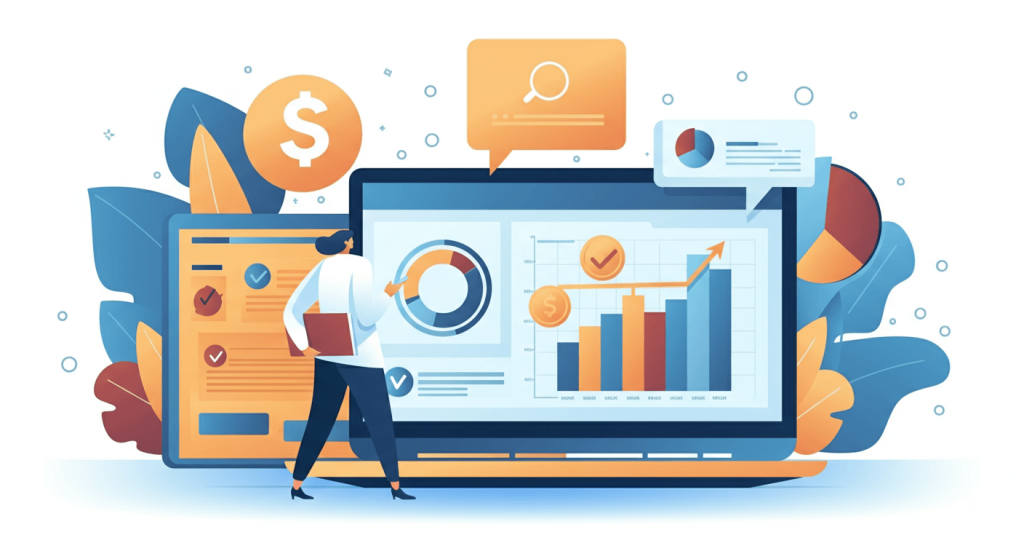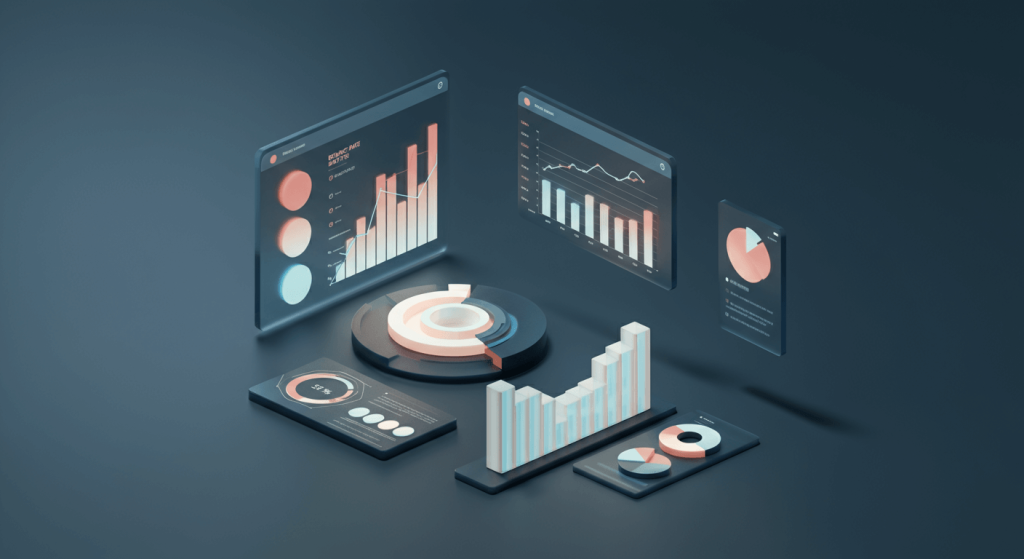
Marketing without data is like setting sail without a map. You might get somewhere, but it’s unlikely to be your desired destination. Data-driven marketing offers a solution, empowering businesses to make informed decisions, target their ideal customers, and optimize their strategies for better results.
By the end of this guide, you’ll learn exactly how to use data-driven marketing to transform your campaigns, from understanding key metrics to creating strategies powered by real insights. Whether you’re new to this approach or looking to refine your methods, this blog will provide actionable steps to start leveraging data in your marketing decisions.
Introduction to Data-Driven Marketing
Before we start, what is data-driven marketing? Put simply, it’s a strategy that uses customer data to optimize marketing efforts. Instead of relying on intuition or outdated practices, data-driven marketing relies on facts. This enables marketers to make decisions backed by real customer behaviors, preferences, and trends.
The benefits are huge:
- Improved Targeting: Focus on the right audience with tailored messages.
- Better ROI: Spend your budget where it’s most effective.
- Personalized Experiences: Create marketing that feels like it was made for one person.
Data-driven marketing isn’t just a trend; it’s quickly becoming an essential tool for businesses big and small. From social media targeting to email campaigns and even traditional advertising, data amplifies impact.
Understanding Key Metrics
Great marketing starts with knowing what to measure. Without tracking the right metrics, you’ll have data, but no direction. Here are the key performance indicators (KPIs) every marketer should monitor:

Customer Acquisition Cost (CAC)
CAC measures how much it costs to acquire a new customer. It’s calculated by dividing marketing expenses by the number of new customers gained over a specific period. The lower your CAC, the more efficient your campaign.
Lifetime Value (LTV) of a Customer
LTV predicts the total revenue a customer will generate during their association with your business. Understanding LTV allows you to determine how much you can spend to acquire and retain a customer profitably.
Conversion Rate
The percentage of people who complete a desired action, such as purchasing or filling out a form. Tracking conversion rates enables you to see which campaigns or channels are driving tangible results.
Bounce Rate and Engagement Metrics
Bounce rate refers to the percentage of users who leave your site without taking further action. Low engagement or high bounce rates may indicate that your content isn’t resonating or that your targeting is off.
By focusing on these KPIs, you can start to see the bigger picture of how your efforts are performing and where there’s room for improvement.

Tools for Data Collection and Analysis
Now that we know what to track, the next step is figuring out how to collect and analyze that data. Thankfully, there are countless tools to bring data-driven marketing to life.
Google Analytics
The go-to tool for website traffic and performance tracking. Google Analytics provides detailed stats on user behavior, demographics, session durations, and traffic sources.
Customer Relationship Management (CRM) Software
Platforms like Salesforce, HubSpot, or Zoho allow you to gather customer data and gain insights into purchase histories, lead sources, and interaction preferences.
Social Media Insights
Social media tools like Facebook Ads Manager, Instagram Insights, or LinkedIn Analytics deliver powerful metrics about ad performance, clicks, shares, and audience engagement.
Heatmaps
Tools like Hotjar or Crazy Egg show exactly where users are clicking or scrolling on your website, offering visual insights into usability and engagement.
Email Platforms
Platforms like Mailchimp or Klaviyo don’t just send emails. They analyze open rates, click-through rates, and conversion effectiveness for your campaigns.
Whether you’re a small business owner or part of a larger team, leveraging these tools ensures you have the foundational data to guide your marketing strategies.
Creating Data Driven Strategies
Now for the fun part! Here’s how to transform these metrics and tools into actionable marketing strategies.

Segment Your Audience
First, divide your audience into smaller, more specific groups based on behavior, demographics, or interests. For example:
- Demographic Data: Age, gender, location (useful for local campaigns).
- Behavioral Data: Purchase behaviors, browsing patterns, or past interactions.
With segmentation, your marketing becomes hyper-targeted, ensuring the right messages reach the right people.
Personalize Your Campaigns
Use the power of data to personalize campaigns. For email marketing, instead of sending generic messages to all subscribers, create dynamic emails like:
- Birthday discounts.
- Follow-ups for abandoned carts.
- Recommendations based on browsing history.
Customers notice and value this personal touch.
Test and Optimize
A/B testing is your best friend. Test variations of headlines, CTA buttons, or images to see what resonates most with your audience.
- Example: Run two Facebook ads with different visuals. Use performance data to determine the winner and utilize it in future campaigns.
Predictive Analysis
Use historical data and AI tools like Tableau or IBM Watson to predict consumer trends before they happen. Predictive marketing lets you anticipate customers’ needs and craft irresistible offers.
Case Studies
Spotify’s Personalized Playlists
Spotify uses user listening data to create personalized playlists like Discover Weekly. By analyzing songs users love, it tailors experiences for millions of subscribers, boosting loyalty and engagement.
Amazon’s AI Recommendations
Amazon’s recommendation system accounts for 35% of its total sales. By analyzing purchase patterns, browsing history, and related products, Amazon provides tailored suggestions that keep users buying more.
Future Trends
Data-driven marketing is continually evolving. Here are upcoming trends to watch:
- AI-Powered Marketing: Expect more businesses to adopt AI tools for predictive analysis.
- Real-Time Data: Faster tools will enable marketers to adjust campaigns on the fly.
- Stronger Privacy Regulations: With more data comes greater responsibility. Transparency and ethical use of data will define future strategies.
Strategically adopting these trends will give businesses a competitive edge in the years to come.
Transform Your Campaigns Starting Today
It’s never been more important to understand how to use data-driven marketing. From improving ROI to creating genuinely personalized experiences, data empowers businesses to deliver results in a highly competitive landscape.
Take the first step today by identifying key metrics, adopting reliable tools, and crafting targeted strategies for your audience. Remember, every data point is a stepping stone to better marketing. Use it wisely, and the results will speak for themselves.
Want to optimize your campaigns even further? Sign up for our free newsletter to stay ahead of the latest tools and strategies in data-driven marketing.
For focused B2B strategies, discover what account-based marketing is and how it targets B2B success.
Leave a Reply